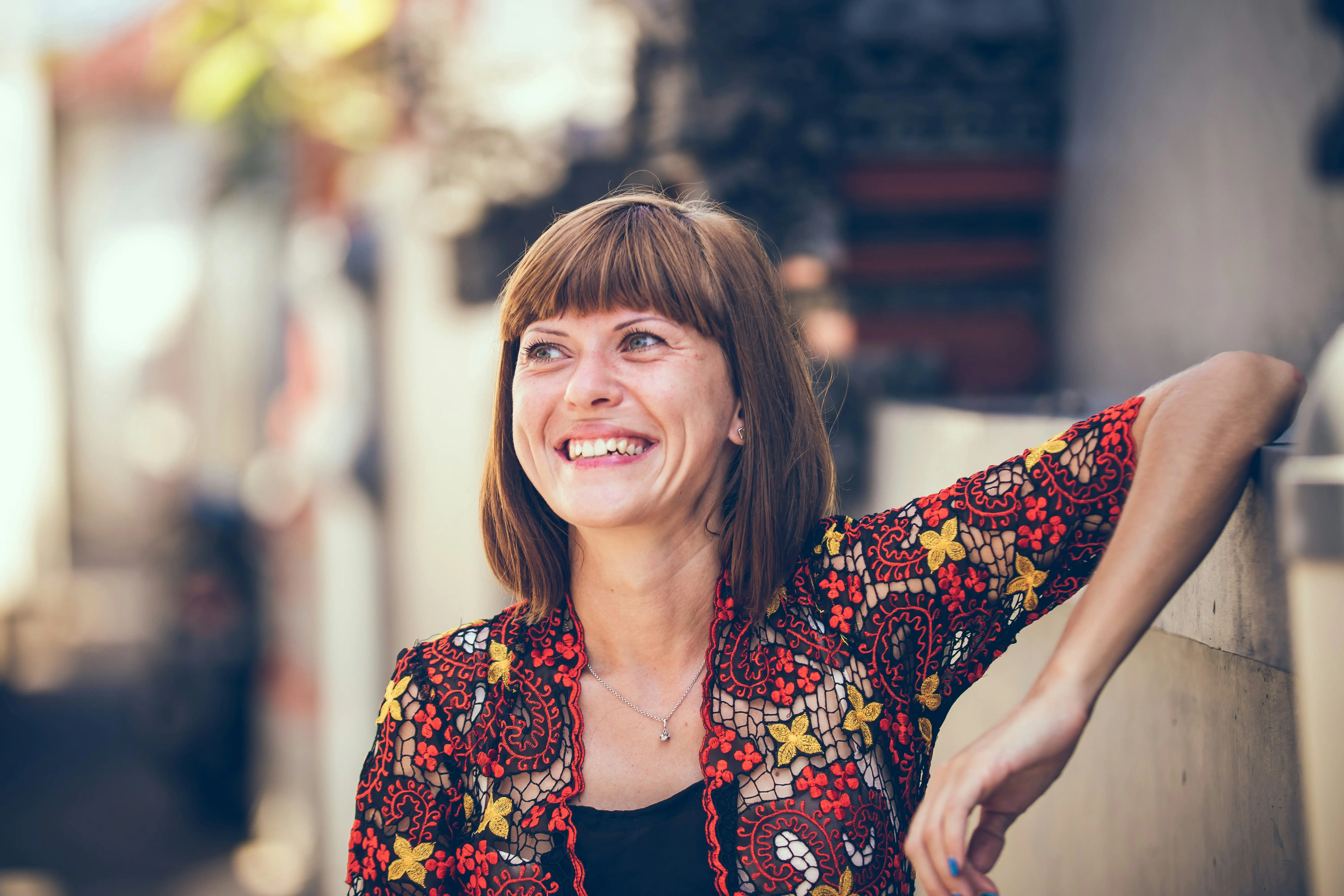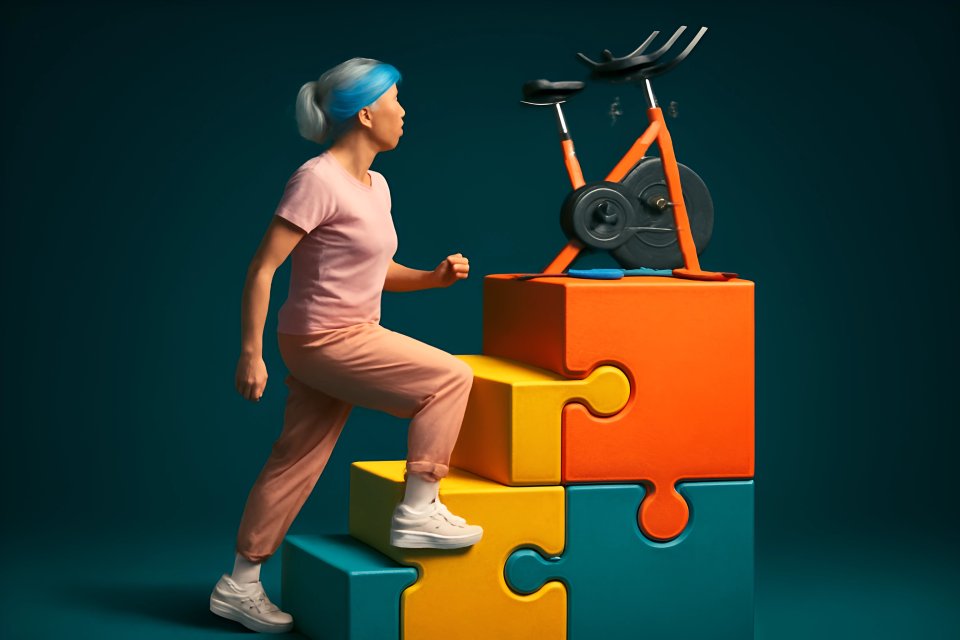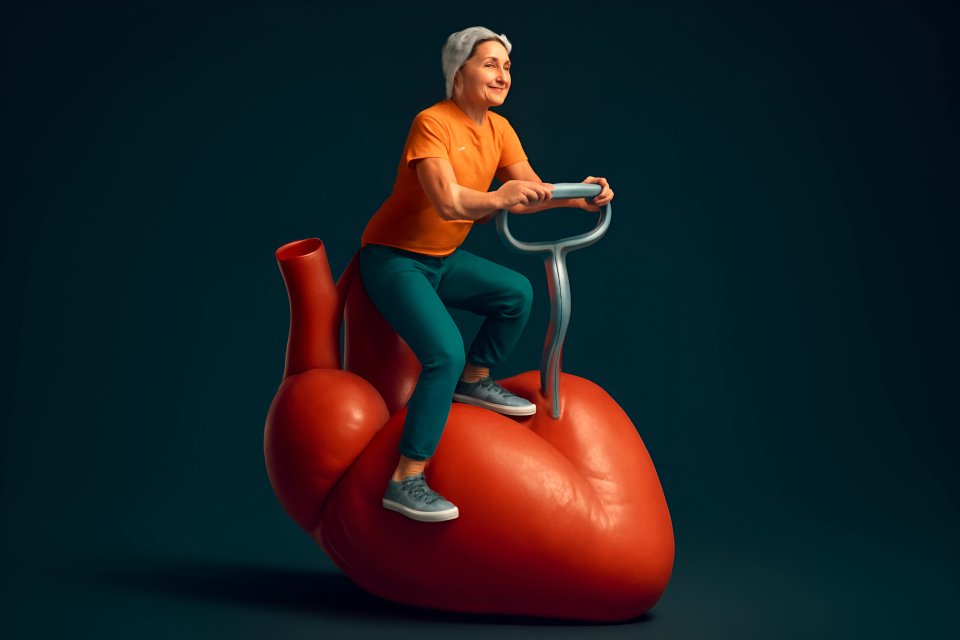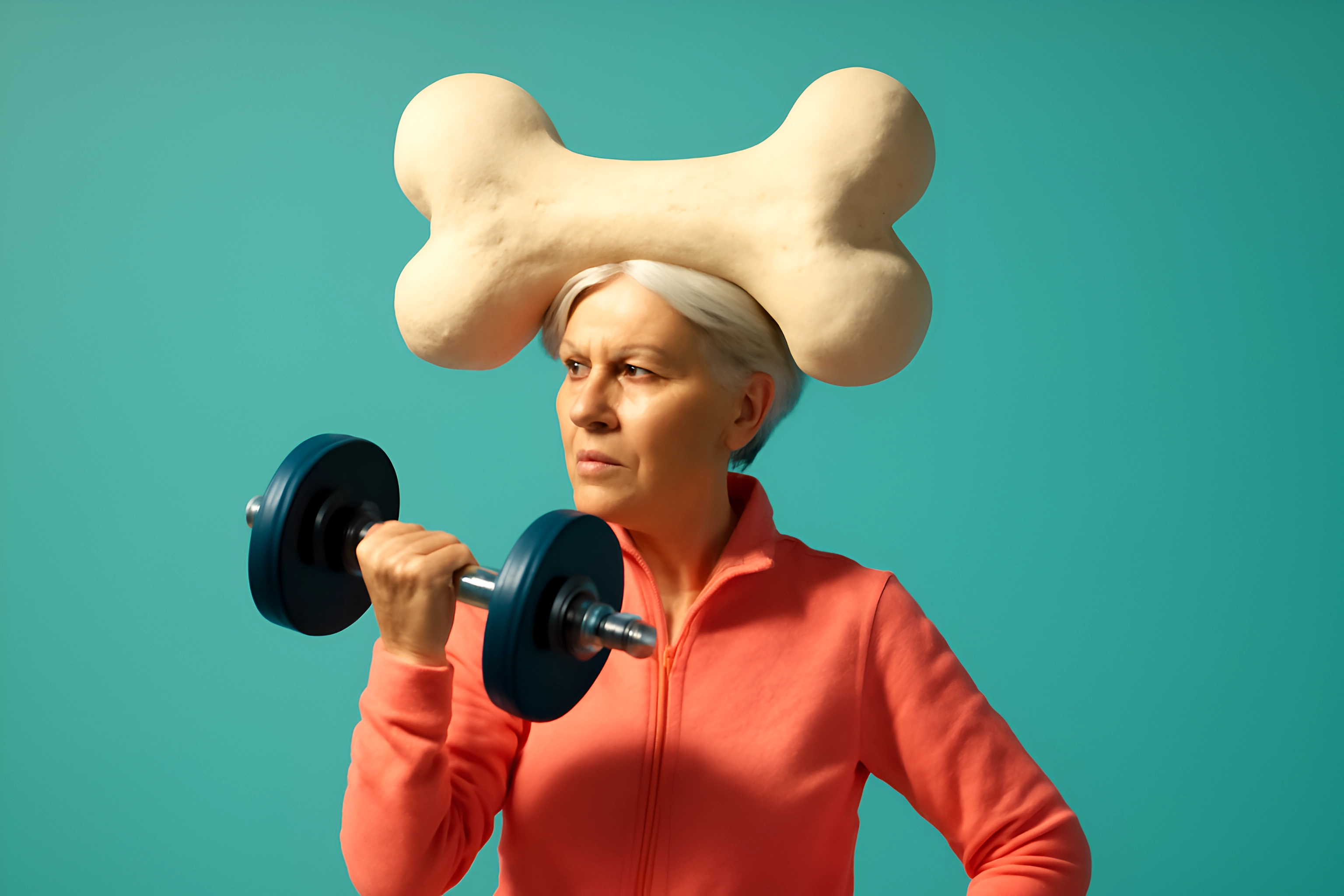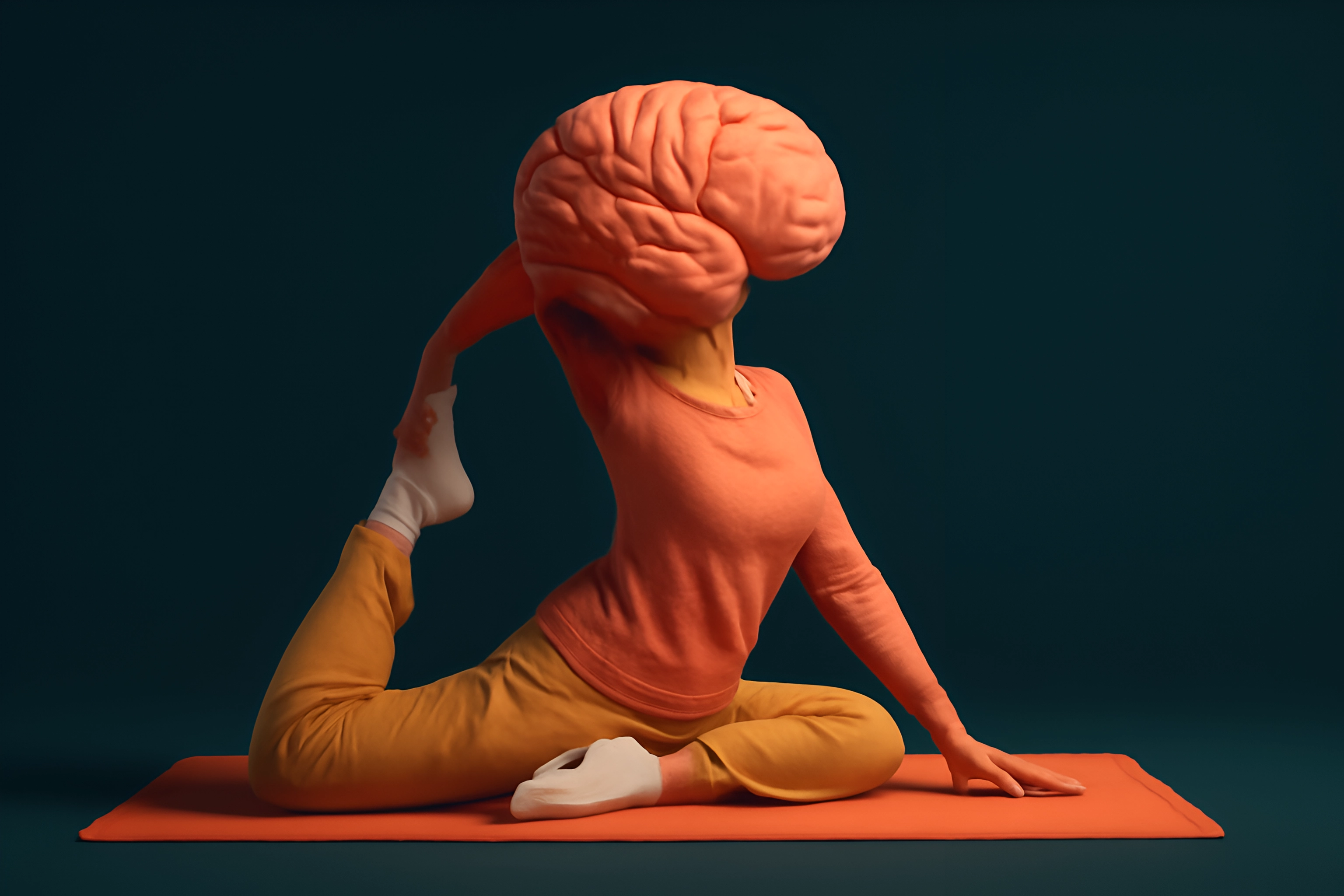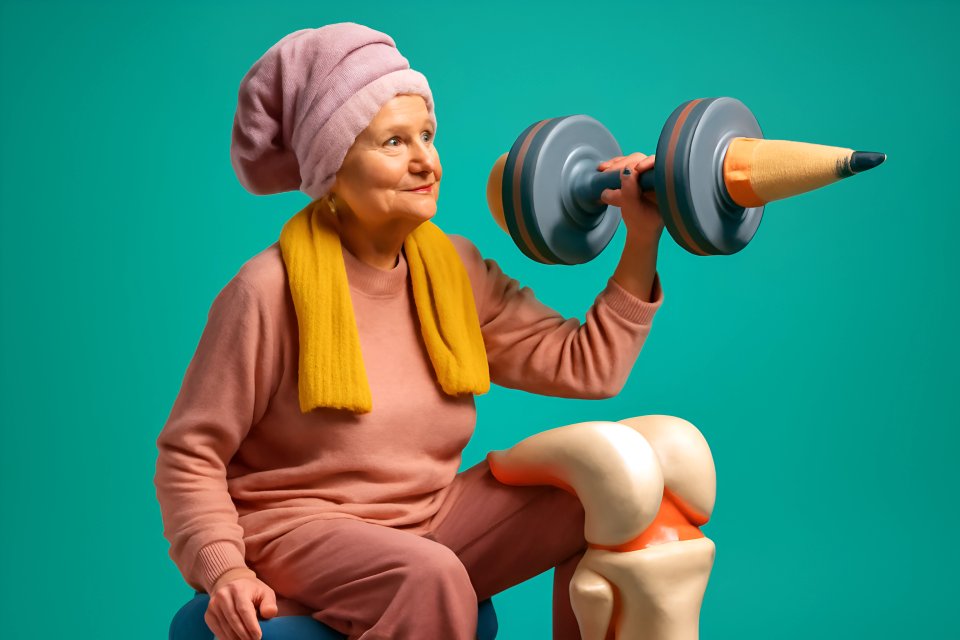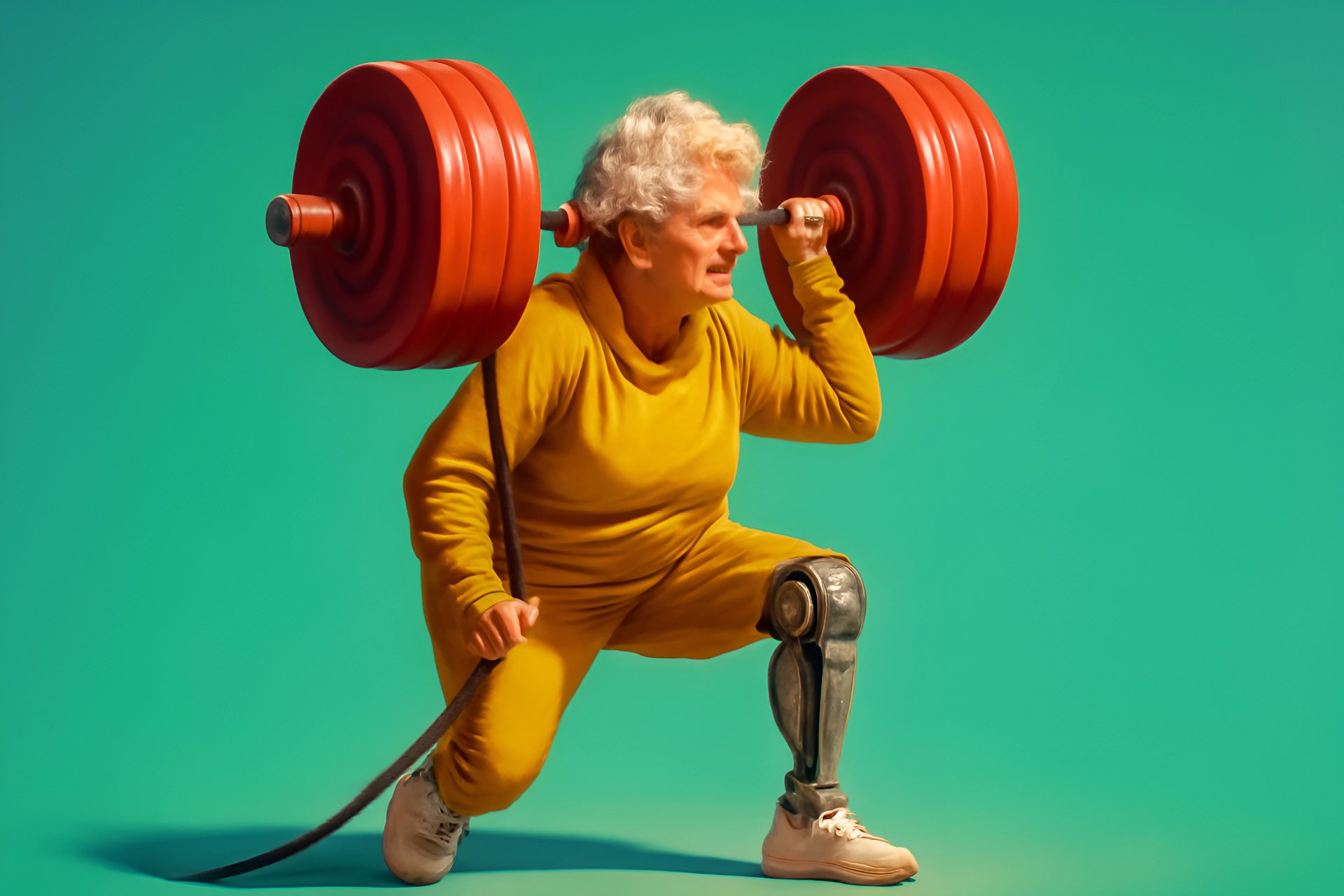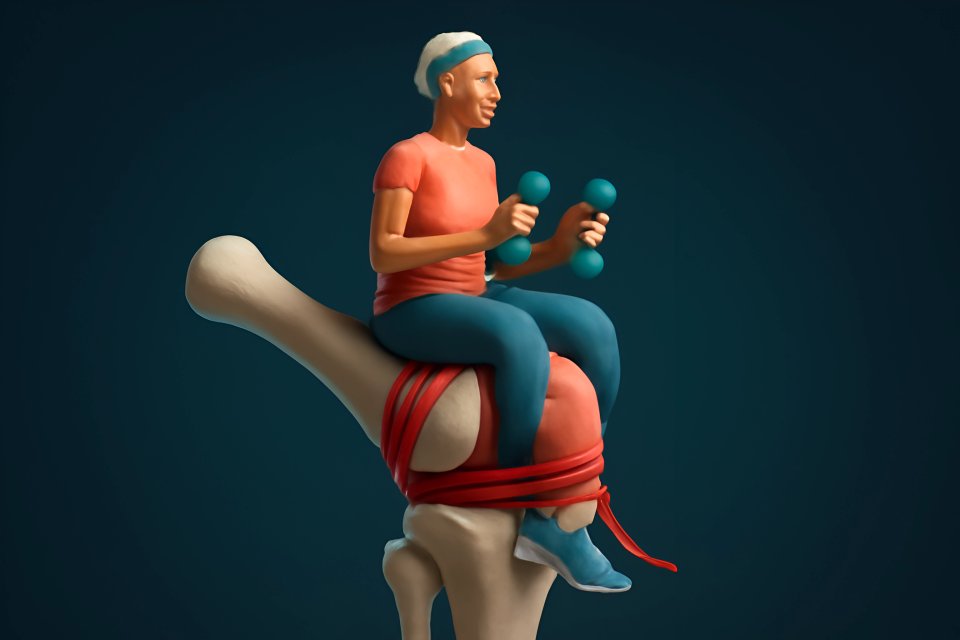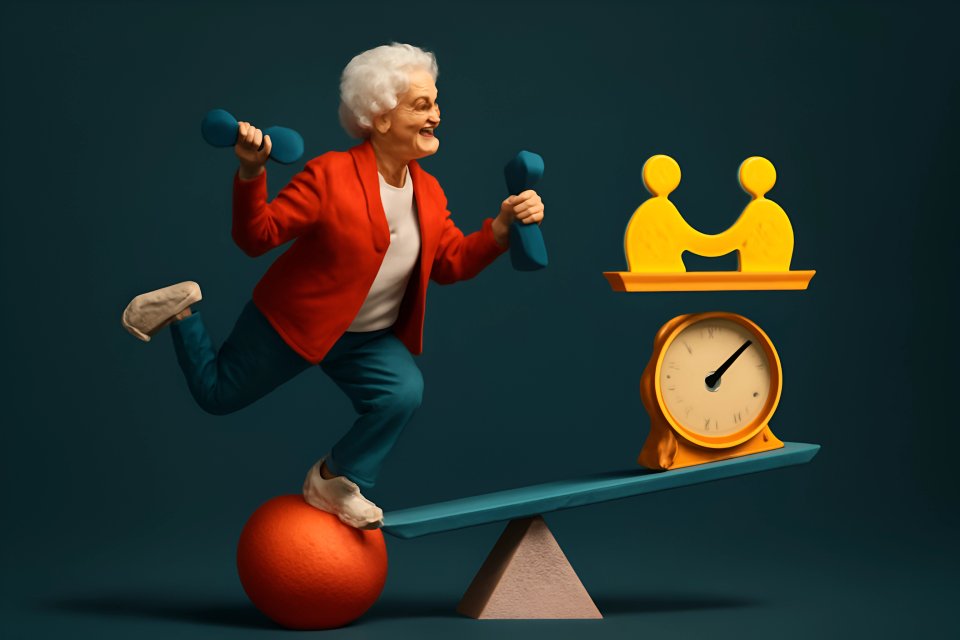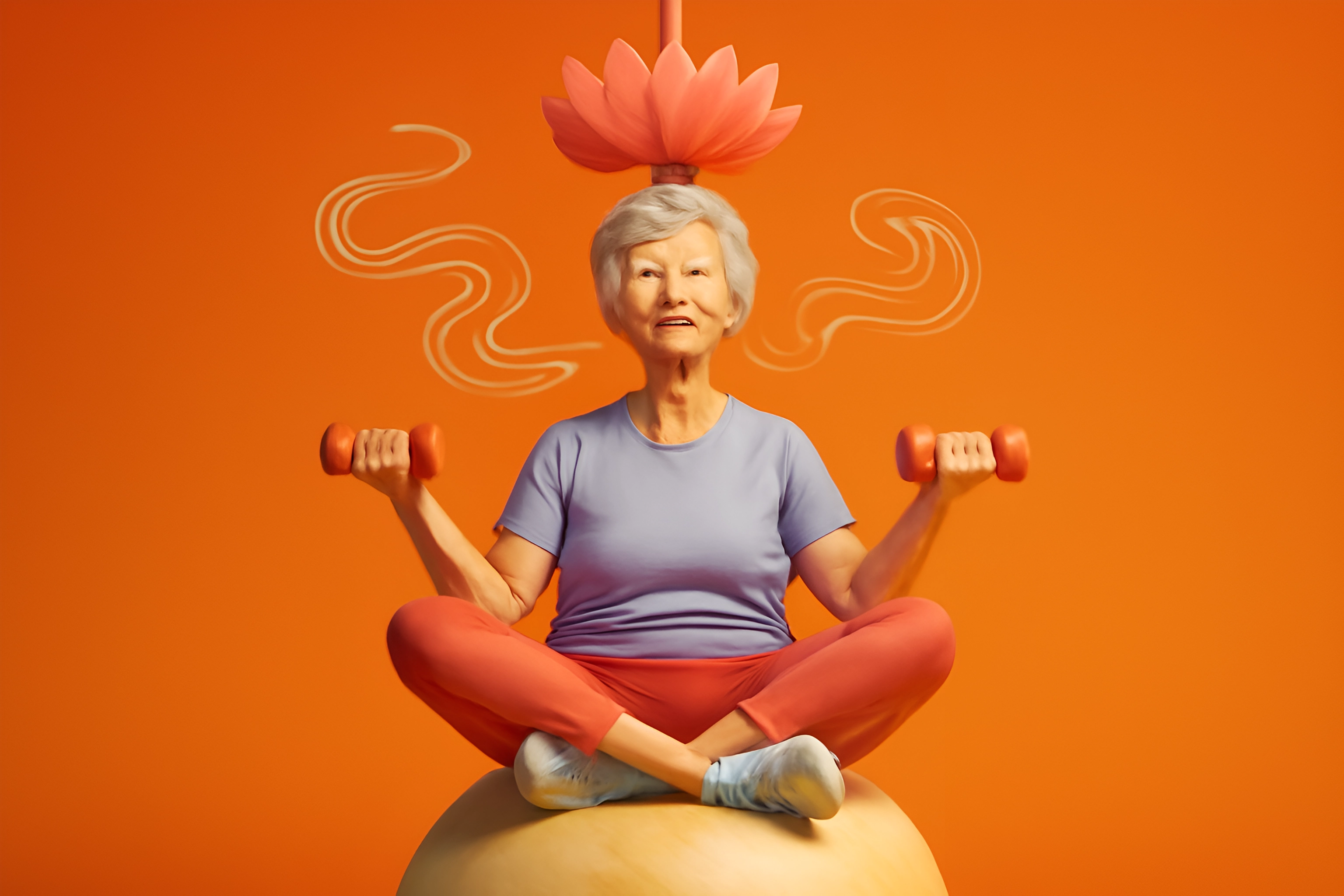
Introduction: Your Toolkit for a Calmer, Healthier You
Does the weight of the world sometimes feel like it’s settling right on your shoulders? As we navigate life over fifty, the sources of stress can change, but they certainly don’t disappear. Whether it's managing new health concerns, adjusting to an empty nest, or finding your rhythm in retirement, these pressures can build up, stealing your energy and your joy.
But what if you had a simple, powerful toolkit to fight back? What if you could reclaim your sense of calm and control, not with a complicated program, but with three simple pillars of well-being? This isn't about eliminating stress—it's about mastering it with a unique, three-pronged approach that combines the mental clarity of meditation, the physical calm of deep breathing, and the mood-boosting power of light exercise.
Get ready to discover a practical, easy-to-follow routine that will become your go-to strategy for senior stress management. By the end of this article, you will have a clear plan to reduce stress, sharpen your focus, and feel more vibrant and in control of your health. This is a cornerstone of effective stress reduction for seniors, and it's more accessible than you think.
Why This Trio? The Science of Calm Explained
Have you ever felt your heart race or your muscles tense up when you're worried? That’s your body’s ancient “fight or flight” response kicking in, a system designed for survival. When triggered, your body releases a flood of hormones, most notably cortisol, which the Cleveland Clinic calls the body's primary stress hormone. While helpful in a true emergency, chronic stress keeps cortisol levels high, which can impact everything from sleep to blood pressure.
This is where our three pillars create a powerful synergy, working together to dismantle stress from every angle. Meditation acts on the prefrontal cortex, the "thinking" part of your brain that fuels worry and anxiety. As Harvard Health Publishing explains, breath meditation is a great way to relieve stress by helping you step back from the cycle of anxious thoughts.
Meanwhile, deep breathing directly hacks your nervous system. According to a review on NCBI, voluntary regulated breathing practices enhance parasympathetic activity, which is your body's "rest and digest" system—the natural antidote to fight or flight. Finally, light exercise releases endorphins, your brain's natural feel-good chemicals, while simultaneously burning off excess stress hormones. By combining these three, you aren't just treating a symptom; you're creating a holistic shield against the mental, physical, and chemical effects of stress.
Pillar 1: The Power of Mindful Stillness (Meditation for Seniors)
Meditation Benefits for Seniors: More Than Just a Quiet Moment
Think you can't meditate? Think again. Many people believe meditation requires a completely empty mind, an impossible feat that leaves them feeling frustrated. But as the Mayo Clinic wisely points out in their guide to meditation, the goal isn't to stop your thoughts, but to observe them without judgment. It’s about creating a small pocket of peace where you are in control, not your worries.
The benefits are profound, especially as we age. The National Alliance on Mental Illness (NAMI) highlights that mindfulness practices can help regulate emotions and improve cognitive function, which are crucial for maintaining mental sharpness. For those ready to go further, you can take a deeper dive into mindfulness and meditation techniques to build on this foundation. The practice is not about perfection; it's about consistent, gentle effort.
Ready to try? Here is a simple, guided practice you can start today.
Step 1: Find Your Comfortable Seat.
You don't need to sit cross-legged on the floor. A supportive chair with your feet flat on the ground is perfect. Rest your hands comfortably in your lap and sit tall but relaxed.
Step 2: Start with Just 3-5 Minutes.
The key to a new habit is making it achievable. Set a gentle timer for three to five minutes. You can always increase the time as you become more comfortable.
Step 3: Focus on an "Anchor."
Your anchor is simply a point of focus to ground you. The easiest one is your breath. Notice the sensation of the air entering your nostrils and filling your lungs, and then the feeling of it leaving your body.
Step 4: Gently Guide Your Mind Back.
Your mind will wander. That's what minds do! When you notice you're lost in thought, gently and without criticism, guide your attention back to your anchor—the breath. Every time you do this, you are strengthening your "focus muscle."
[FitOverFifty Tip Box]: Start your day with a 5-minute meditation before you even check your phone. It sets a calm tone for the entire day.
Pillar 2: The Anchor of Your Calm (Deep Breathing Techniques for Older Adults)
Simple and Effective: Deep Breathing Techniques for Older Adults
Of all the tools at your disposal, your breath is the fastest and most direct way to signal safety to your nervous system. When you're stressed, your breathing becomes shallow and rapid. By intentionally slowing it down, you are sending a powerful message to your brain: "You are safe. You can relax." This is why WebMD highlights breathing techniques for stress relief as a primary tool for managing anxiety.
This isn't just a feeling; it's physiology. The British Heart Foundation explains that deep breathing exercises activate the parasympathetic nervous system, which helps lower your heart rate and counter the fight-or-flight response. You can feel the effects almost instantly. For those who want to learn more, you can explore the powerful synergy between meditation and deep breathing in our dedicated guide.
Here are two simple yet powerful techniques you can use anywhere, anytime. For a guided experience, you can also follow along with a resource like the 15 Minute Deep Breathing Exercise from City of Hope.
Technique 1: Box Breathing (4-4-4-4)
This technique is excellent for regaining focus and a sense of control.
- Gently exhale all the air from your lungs.
- Inhale slowly through your nose for a count of
4. - Hold your breath for a count of
4. - Exhale slowly through your mouth for a count of
4. - Hold the exhale for a count of
4. Repeat for 1-2 minutes.
Technique 2: The 4-7-8 Breath
This breath is incredibly effective for promoting relaxation and preparing for sleep.
- Gently exhale completely through your mouth.
- Close your mouth and inhale quietly through your nose for a count of
4. - Hold your breath for a count of
7. - Exhale completely through your mouth, making a whoosh sound, for a count of
8. - This is one breath. Repeat the cycle three more times.
[Safety First Callout]: If you ever feel dizzy while practicing deep breathing, stop and return to your normal breath. Always listen to your body.
Pillar 3: Moving with Intention (Light Exercise for Mental Health)
Boost Your Mood with Gentle Movement: Light Exercise for Mental Health
When you feel stressed, the last thing you might want to do is exercise. But we're not talking about running a marathon. We're talking about gentle, intentional movement—a powerful way to process stress hormones and release mood-lifting endorphins. The mind-body connection is undeniable; moving your body is one of the best ways to change your mind.
The National Institute on Aging (NIA) confirms that exercise and physical activity for older adults are crucial not just for physical strength but for improving mental health and reducing feelings of stress. The key is finding low-impact activities that feel good for your body. This is a core part of a holistic lifestyle, and you can learn more about integrative approaches combining diet, exercise, and mindfulness to build a complete wellness plan.
Here are a few excellent forms of light exercise for mental health that are perfect for seniors:
- Mindful Walking: This isn't about speed or distance. It's about paying attention. Feel your feet on the ground, notice the breeze on your skin, and observe the sights and sounds around you without judgment.
- Gentle Stretching or Chair Yoga: Tension loves to hide in our neck, shoulders, and hips. The Arthritis Foundation recommends chair yoga and gentle movement for seniors as a safe way to release that tension, improve flexibility, and calm the mind.
- Tai Chi: Often called "meditation in motion," Tai Chi combines slow, flowing movements with deep breathing. It's fantastic for improving balance, reducing stress, and cultivating a sense of inner peace.
Creating Your Personal Routine: Putting It All Together
Your 15-Minute Daily De-Stress Routine
Knowledge is one thing, but action is where the magic happens. The true power of this three-pronged approach comes from weaving it into a simple, consistent daily routine. Here are two sample routines—one for starting your day with calm intention and one for winding down peacefully.
The morning routine is designed to gently awaken your body, set a positive tone, and prepare you for the day ahead.
Minutes 1-5: Gentle Stretching (Pillar 3) - Wake up the body. Minutes 6-10: Guided Meditation (Pillar 1) - Set a calm intention. Minutes 11-15: Mindful Walking (Pillar 3) & Box Breathing (Pillar 2) - Integrate movement and breath.
The evening routine helps you release the day's tensions and prepare your mind and body for restorative sleep.
Minutes 1-5: 4-7-8 Breathing (Pillar 2) - Signal relaxation to your nervous system. Minutes 6-10: Body Scan Meditation (Pillar 1) - Consciously release tension from head to toe.
This table breaks it down clearly:
| Routine | Time | Activity (Pillar) |
|---|---|---|
| Morning Kickstart | 5 Mins | Gentle Stretching (Pillar 3) |
| 5 Mins | Guided Meditation (Pillar 1) | |
| 5 Mins | Mindful Walk & Box Breathing (Pillars 3 & 2) | |
| Evening Wind-Down | 5 Mins | 4-7-8 Breathing (Pillar 2) |
| 5 Mins | Body Scan Meditation (Pillar 1) |
Remember, this is a flexible template, not a rigid prescription. Feel free to mix and match these techniques. The most important thing is to find a small, consistent practice that you can stick with. Consistency is far more powerful than perfection.
Conclusion: Take Your First Step Toward a More Peaceful You
You now hold the toolkit for a calmer, more resilient you. We've explored the incredible synergy of our three pillars: the mental stillness from Meditation, the immediate calm from Deep Breathing, and the mood-lifting power of Light Exercise. These aren't just separate activities; they are a combined strategy to help you master stress and live with greater vitality.
At FitOverFifty, we believe you are the architect of your well-being. You have the power to actively shape your health, add life to your years, and navigate challenges with grace and strength. This three-pronged approach is your blueprint for building a foundation of inner peace that will support you through anything life sends your way.
Which of these three techniques are you most excited to try this week? Share your choice in the comments below! Your journey inspires our community.






